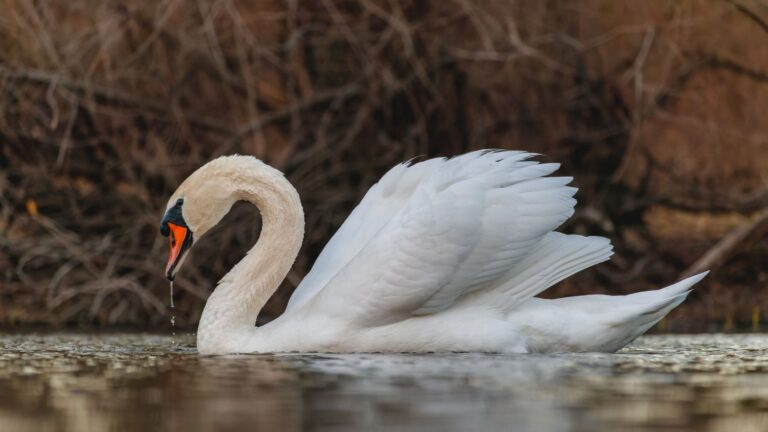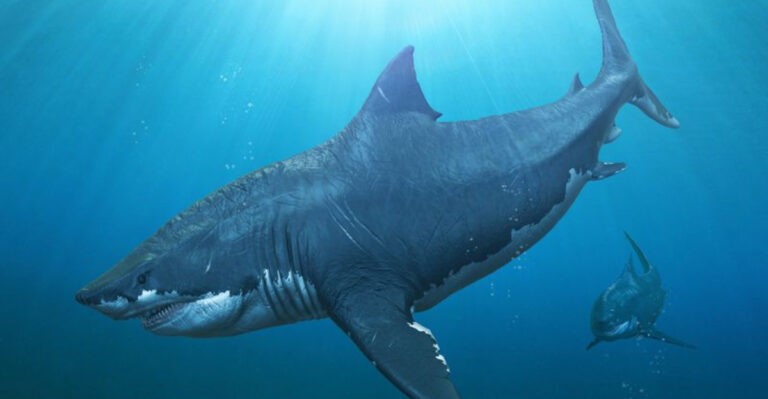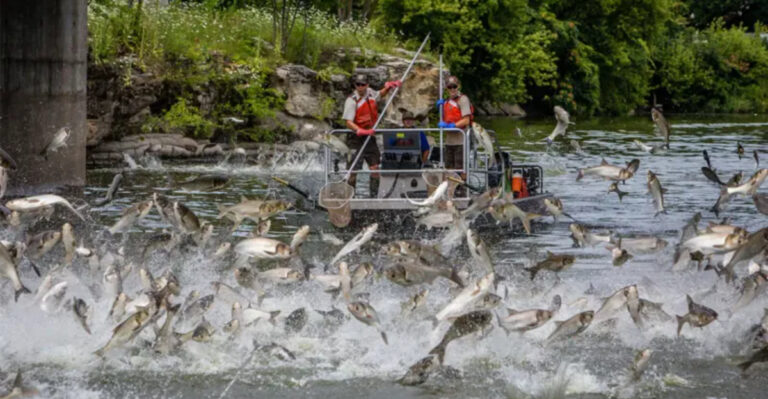6 Record-Breaking Alligators From The State Of Mississippi
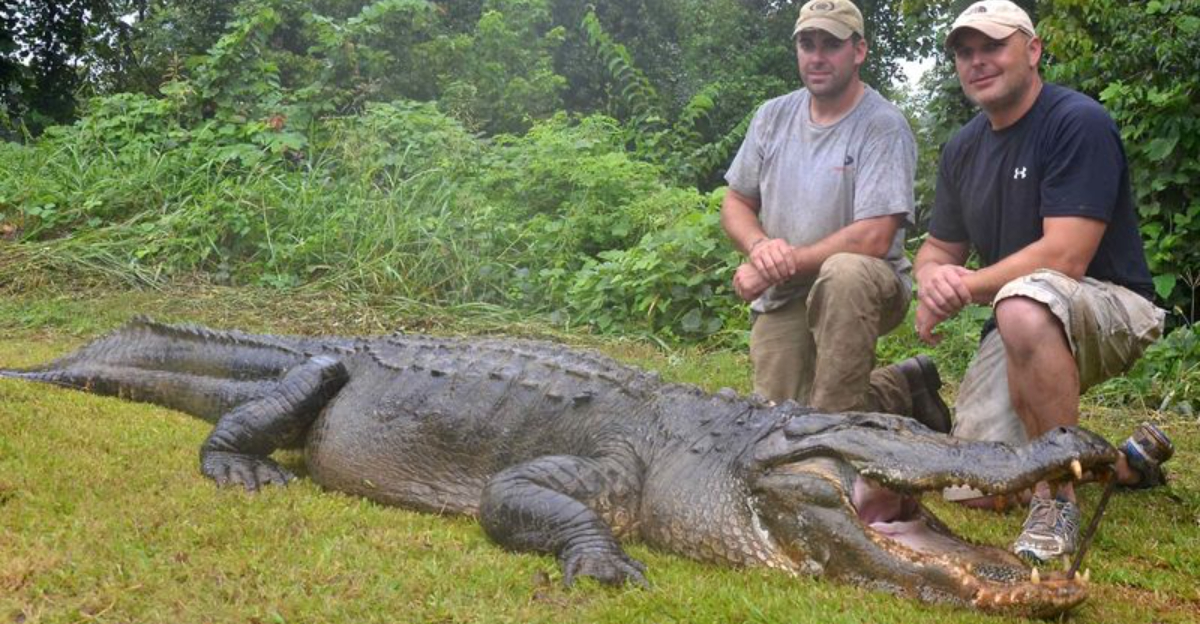
Mississippi’s vast waterways hide some of America’s most impressive alligators. These prehistoric-looking creatures have been breaking records for decades, amazing hunters and wildlife experts alike.
From the murky depths of the Yazoo River to the winding Pearl River, these massive reptiles showcase nature’s awesome power and Mississippi’s rich biodiversity.
1. 14 ft 3 in, 802.5 lbs – Yazoo River (2023)
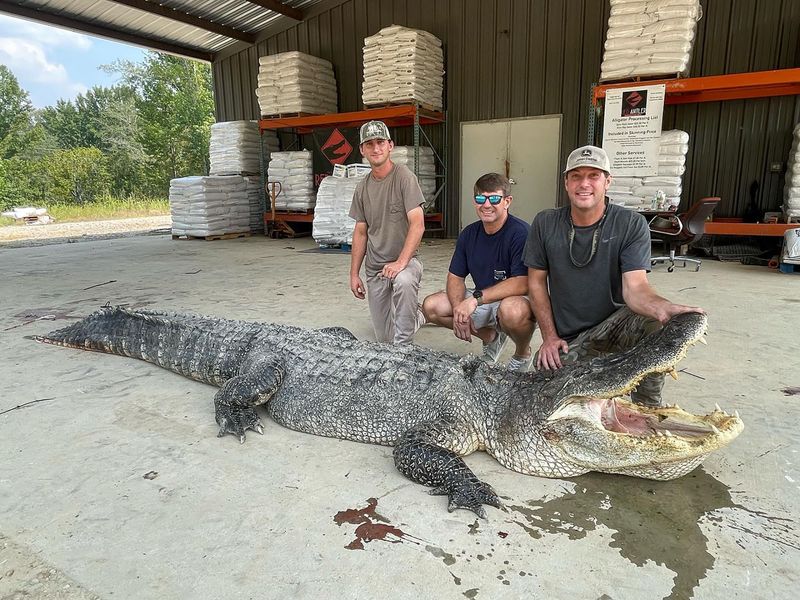
The battle lasted seven grueling hours. Four determined hunters—Donald Woods, Will Thomas, Joey Clark, and Tanner White—faced this behemoth in an epic struggle that damaged their equipment and tested their resolve.
When finally measured, this monster shattered both state length and weight records, cementing its place in Mississippi hunting lore forever.
2. 14 ft 1/4 in, 826 lbs – Yazoo River (2015)
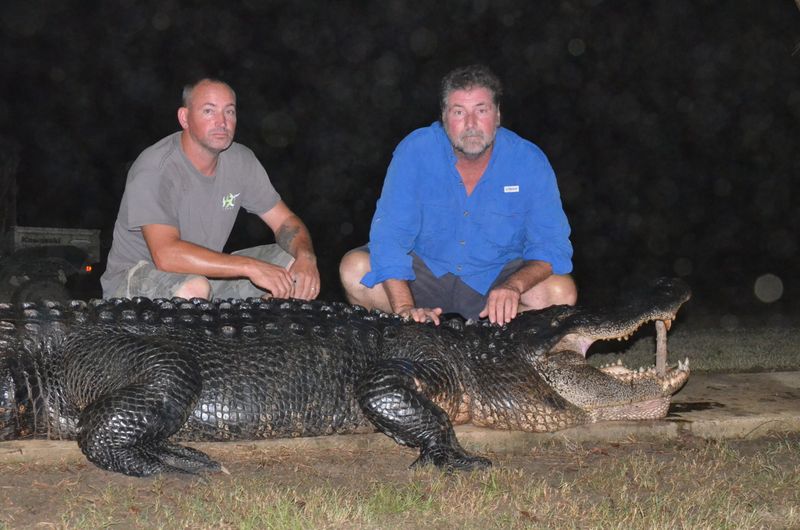
Kennie Crechale’s legendary catch held Mississippi’s crown for eight years. The Yazoo River yielded this prehistoric giant during a hunt that locals still talk about today.
Weighing more than four average men combined, this gator’s massive bulk required specialized equipment just to haul it from the water. Its record stood unchallenged until 2023.
3. 13 ft 1/2 in, 822 lbs – Mississippi River (2015)

Clayton Gibson never expected to make history that muggy August night. Stalking through the Mississippi River’s backwaters, he encountered this ancient beast lurking in the shadows.
The hunt quickly turned dangerous as the massive reptile fought ferociously for freedom. Gibson’s catch proved the Mississippi River harbors some of America’s largest living dinosaurs.
4. 10 ft 2 in, 319 lbs – Pearl River (2015)
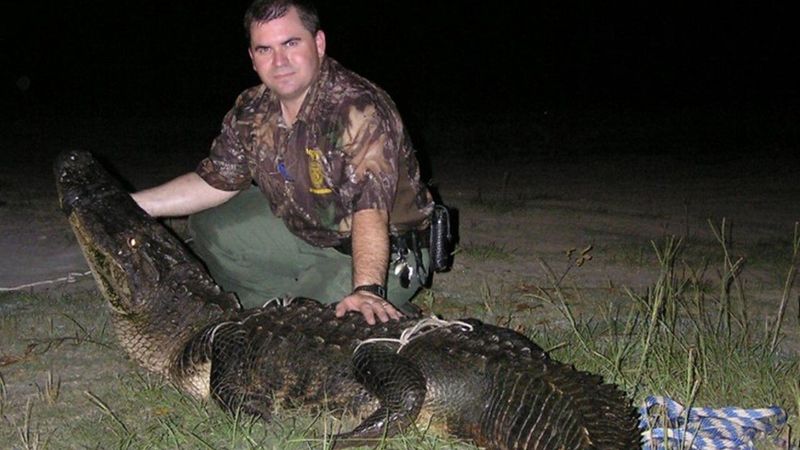
Jim Denson’s Pearl River trophy surprised wildlife biologists with its impressive proportions. Unlike the Yazoo monsters, Pearl River gators typically run smaller, making this catch particularly noteworthy.
Local conservation officers documented the specimen thoroughly before celebrating this evidence of the Pearl’s healthy ecosystem. Denson’s find highlighted the diversity of Mississippi’s alligator habitats.
5. 10 ft 1/2 in, 283 lbs – Pearl River (2015)
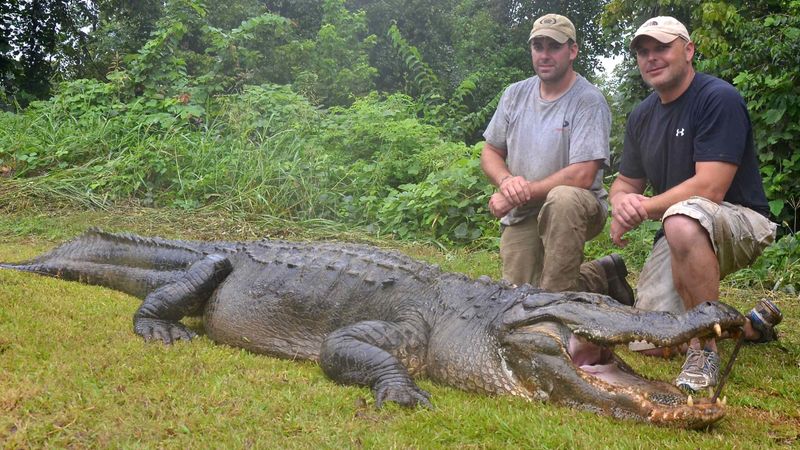
Lightning struck twice in the Pearl River when Jonathon Kent hauled in this impressive specimen just days after Denson’s catch.
The coincidence sparked scientific interest in whether the area supported a unique population of larger-than-average gators. Kent’s capture featured unusual gold-flecked scales, adding to its remarkable appearance and scientific value.
6. 9 ft 11 in, 283 lbs – Eagle Lake (2010)
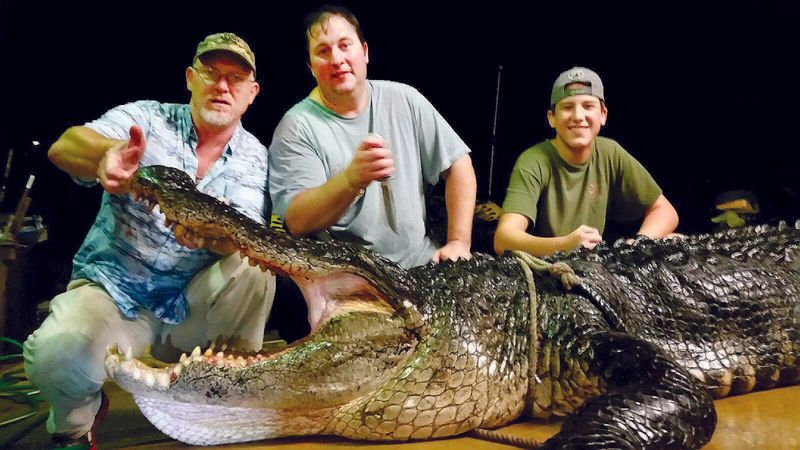
Craig Jones’s Eagle Lake trophy nearly cost him his boat. The crafty reptile charged and rammed the vessel repeatedly before Jones could secure it, creating a nail-biting hunt story.
Eagle Lake’s shallow waters make gator hunting particularly challenging, as the animals can easily hide among cypress knees and dense vegetation. Jones’s patience paid off with this impressive specimen.
7. Mississippi Is Home To A Thriving Alligator Population
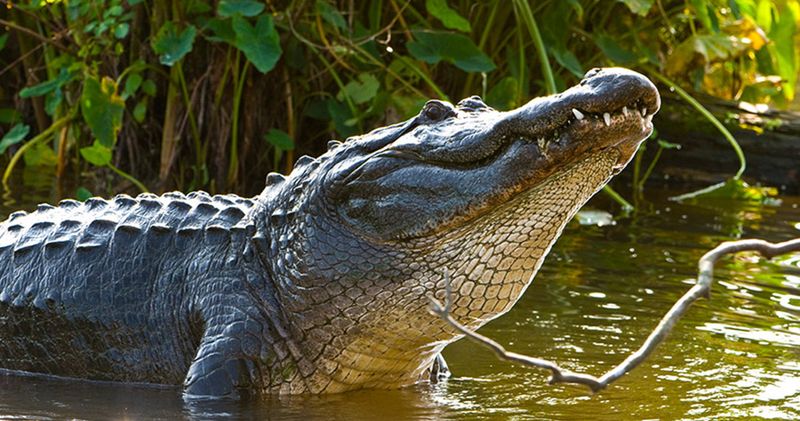
Approximately 40,000 alligators patrol Mississippi’s waterways today. Their comeback story represents one of America’s greatest wildlife conservation successes, rebounding from near extinction in the mid-20th century.
The Mississippi Delta’s perfect combination of warm temperatures, abundant prey, and interconnected waterways creates ideal conditions for these ancient reptiles to flourish across the state.
8. Alligator Hunting Season In Mississippi
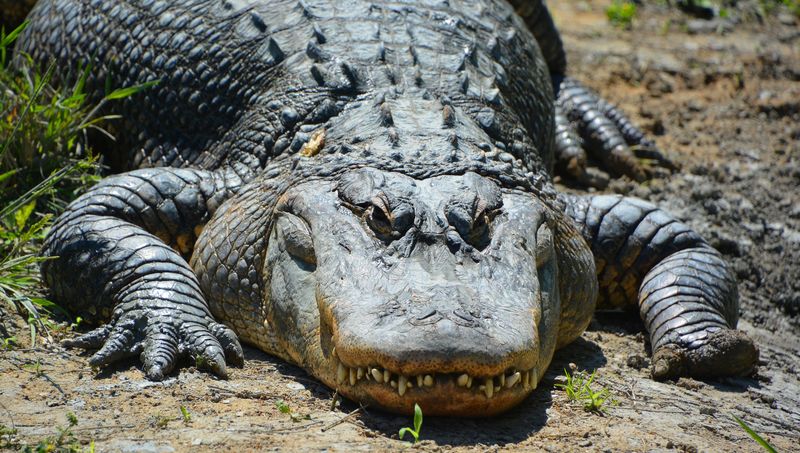
Late August brings Mississippi’s most adrenaline-pumping tradition: alligator season. The carefully regulated 10-day hunt requires special permits distributed through a lottery system that receives thousands more applications than available spots.
First-time hunters must complete mandatory training courses emphasizing safety, ethical hunting practices, and proper handling techniques to ensure humane harvests.
9. Mississippi Alligators Can Grow To Enormous Sizes
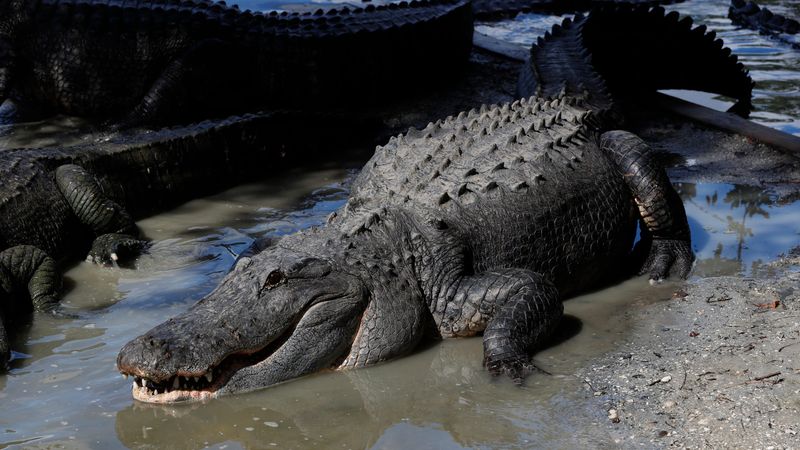
Female alligators typically max out around 9 feet, but males can reach truly monstrous proportions. Growth continues throughout their lives, with the oldest specimens achieving the most impressive dimensions.
Biologists estimate Mississippi’s largest gators may be 50-70 years old! Their slow metabolism and efficient energy use allow these cold-blooded giants to channel most nutrients into pure growth.
10. Alligators Play A Crucial Role In Mississippi Ecosystems
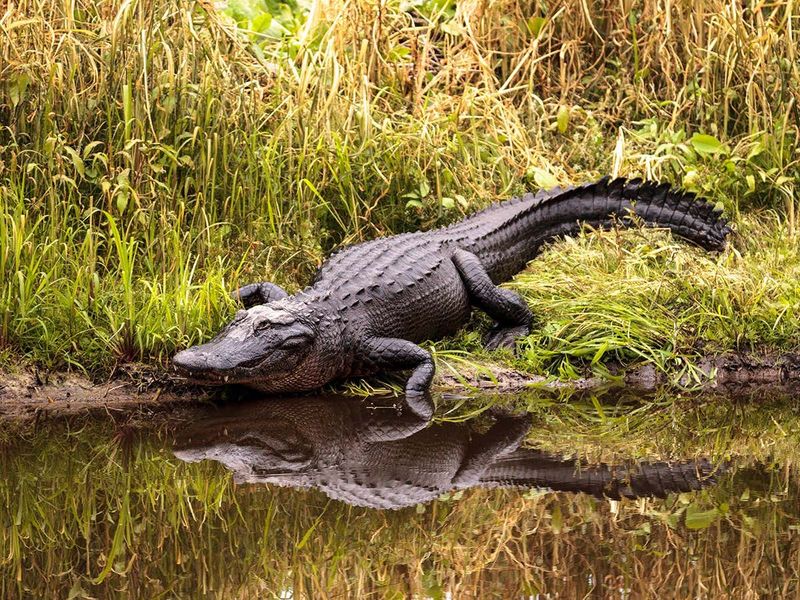
These armored architects literally reshape wetlands! Their “gator holes” – depressions dug into pond bottoms – create crucial microhabitats that support countless other species during droughts.
Their feeding habits control invasive fish populations and maintain balanced food webs. Even their nesting mounds create elevated dry spots where rare plants thrive, showcasing how these predators engineer entire ecosystems.
11. Mississippi Alligators Are Protected By Law

From unregulated hunting to protected status – Mississippi’s alligator conservation journey represents an environmental success story. The 1967 Endangered Species Act shielded these reptiles when their numbers plummeted to dangerous lows.
Today, strict harvest quotas, habitat protection initiatives, and scientific monitoring ensure sustainable populations. Poaching carries hefty fines up to $5,000 and potential jail time.
12. Alligators Can Live For Over 35 Years In Mississippi
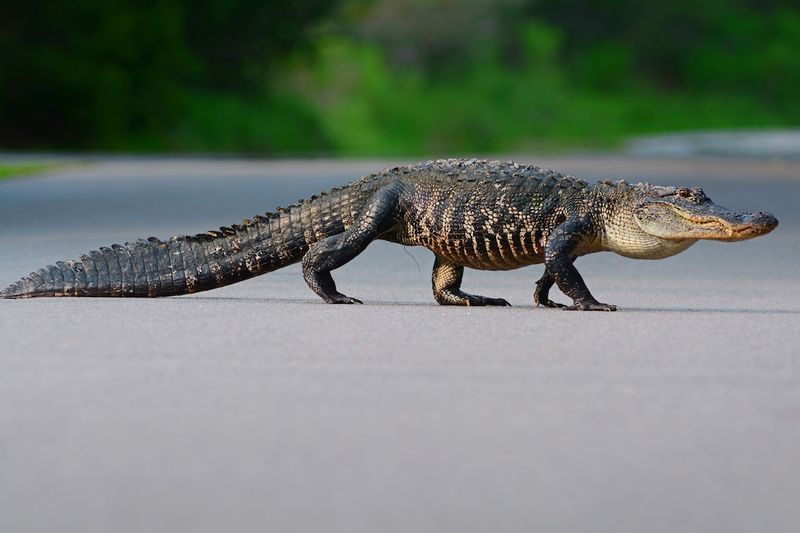
Ancient survivors indeed! Wild Mississippi alligators routinely reach their fourth decade, with some captive specimens living past 70 years. Their remarkable longevity allows them to witness tremendous environmental changes throughout their lives.
Scientists track individual gators using microchips and notched scales, revealing fascinating life histories. Some monitored individuals have inhabited the same territories for over 25 consecutive years!



